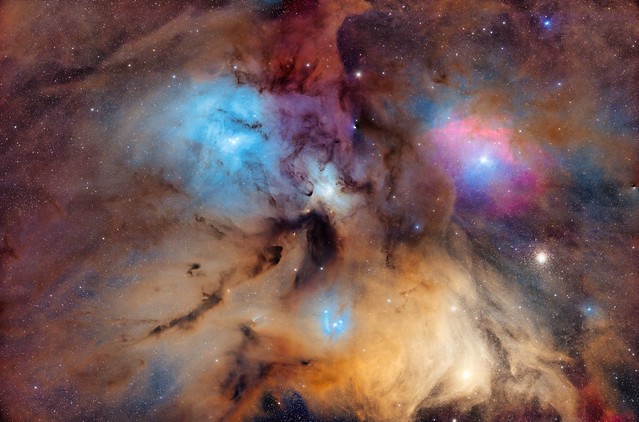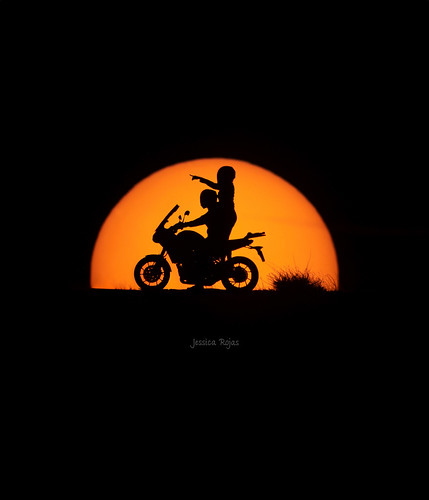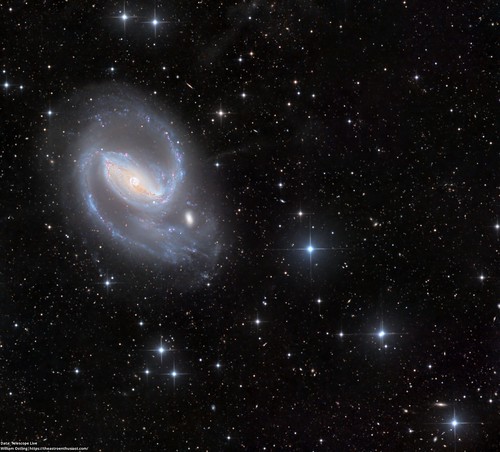 The rural sky of Teresópolis
The rural sky of Teresópolis by
Victor Lima, no Flickr
The Milky Way cloud appears in detail over Morro dos Cabritos, a 900-meter-high mountain in the Vale dos Frades region, in Teresópolis, Rio de Janeiro, Brazil. This is a rural area categorized as class 3 on the Bortle scale.
The Bortle scale is a numerical rating system that assesses the darkness and visibility of the night sky. It consists of nine levels, ranging from Class 1 (the darkest skies) to Class 9 (severe light pollution). Each class on the scale describes specific characteristics and features of the sky.
In Bortle Class 3, the sky conditions exhibit relatively limited light pollution. Here are some notable features of a Bortle 3 sky:
Moderate Light Pollution: Bortle 3 skies experience some degree of light pollution, typically from nearby towns or cities. While not as severe as in more populated areas, the presence of artificial lighting affects the overall darkness and visibility of the sky.
Milky Way Visibility: In Bortle 3 skies, the Milky Way, our galaxy, is visible as a prominent band stretching across the sky. While it may not be as vivid and detailed as in darker sky conditions, the core of the Milky Way and its brighter sections can still be observed.
Good Star Clarity: Bortle 3 skies offer reasonably clear views of individual stars. While some fainter stars may be less visible due to light pollution, the overall brilliance and clarity of the stellar display remain impressive. Constellations and their brighter stars are easily identifiable.
Observable Nebulae and Galaxies: Deep-sky objects, such as nebulae and galaxies, can be observed in Bortle 3 skies. While the presence of light pollution may affect the visibility of fainter objects, brighter and more prominent nebulae and galaxies should still be visible. The details and structures of these celestial objects can be appreciated with the right equipment.
Zodiacal Light: Bortle 3 skies allow for occasional sightings of the zodiacal light. This faint glow appears as a pyramid-shaped illumination along the ecliptic and is caused by sunlight reflecting off interplanetary dust particles. In darker areas of the Bortle 3 zone, the zodiacal light may be more visible.
Meteor Shower Observations: Bortle 3 skies are suitable for observing meteor showers. While some light pollution may affect the visibility of faint meteors, brighter meteors and fireballs should still be visible. Clear nights during meteor showers can offer memorable viewing experiences.
Overall, Bortle 3 skies provide a relatively darker and clearer viewing environment compared to higher Bortle classes. Although some light pollution is present, stargazers and astronomers can still enjoy a range of celestial objects and phenomena, including the Milky Way, individual stars, nebulae, galaxies, zodiacal light, and meteor showers.
EXIF:
07/14/2023 - 9pm
Single Exposure Vertical Panorama
Canon 6Da | Sigma 20mm f/1.4 Art
5x 20 sec | f/1.8 | ISO 5000
 Rho Ophiuchi 2x2 Mosaic
Rho Ophiuchi 2x2 Mosaic Rho Ophiuchi different views comparison
Rho Ophiuchi different views comparison
















